Use Science to Build the Fastest Pinewood Derby Car
For seven years, I worked at NASA on the Mars Curiosity rover. It is just like a Pinewood Derby car, except it has six wheels, it’s nuclear powered and it shoots lasers.
My Cub Scout son and I decided we would take the science principles I used while building stuff at NASA and apply them to making his Pinewood Derby car.
Take a look at some of those science principles in this video and check out my list of the most important steps for making fastest Pinewood Derby car possible.
SEVEN STEPS FOR MAKING THE FASTEST PINEWOOD DERBY CAR
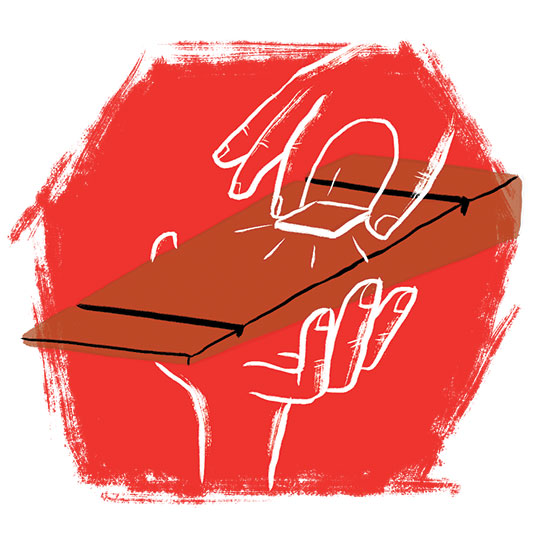
1. Max out your Pinewood Derby car’s weight at 5 ounces
Get as close as possible to the car’s maximum weight (usually 5 ounces) and make sure the heaviest part is about 1 inch in front of the rear axle. This is the most important step. Science shows if you do this correctly, you will beat a Pinewood Derby car built exactly the same — except with the weight toward its front — by 4.6 car lengths. It works because the farther back the weight is, the more potential energy you have because your center of mass is higher up on the track. (Don’t put it too far back, or your Pinewood Derby car will become unstable and pop a wheelie.)
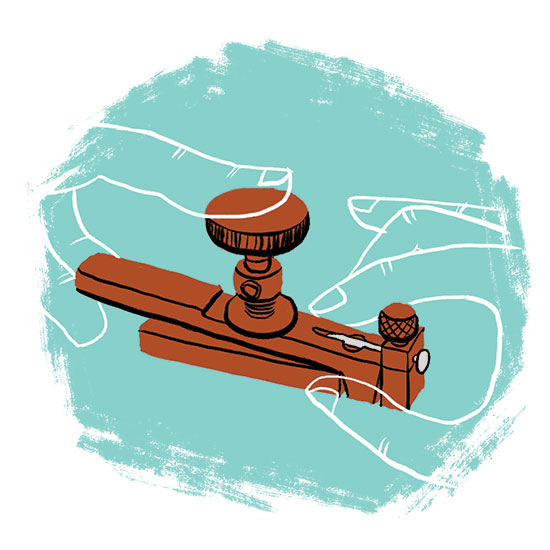
2. Use lightweight wheels.
Using non-standard wheels is illegal in some packs’ races, but if it’s not in yours, this is a must-do step that will give you a 2.1-car-length advantage at the finish line versus a car with normal wheels. It works because heavy wheels take away from the kinetic energy (the energy something has due to its motion), which makes the Pinewood Derby car slower.
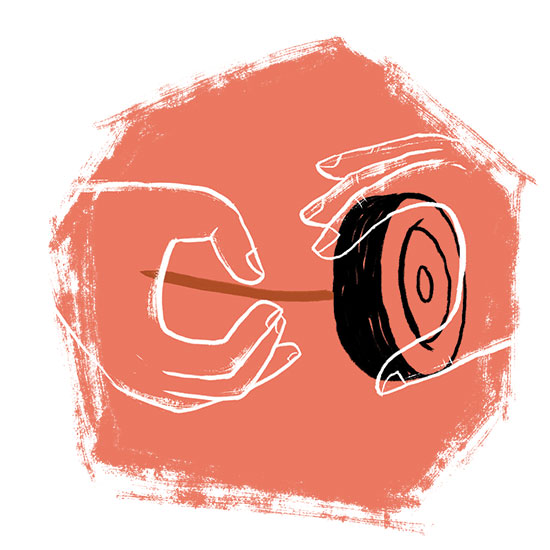
3. Use bent polished axles.
Bending your Pinewood Derby car axles with a bending tool will make the wheels ride up against the nailhead, which creates less friction than if the wheel is bouncing around and rubbing against the wooden Pinewood Derby car body. See video above for details.
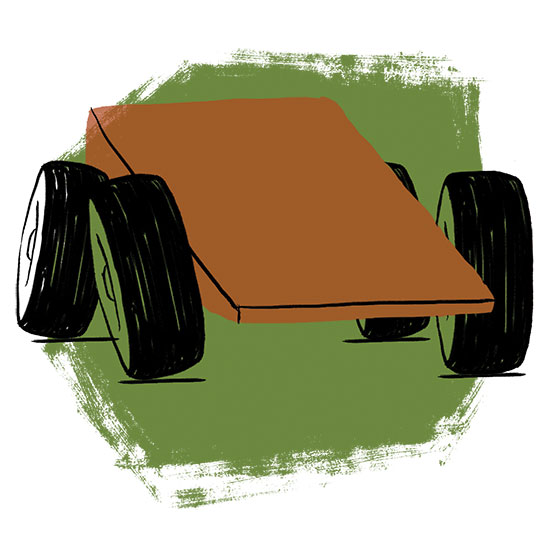
4. Railride.
Railriding means you steer your Pinewood Derby car into the center guide track just enough that you keep the car from bouncing around. This helps reduce friction and saves energy for speed. See video for details.
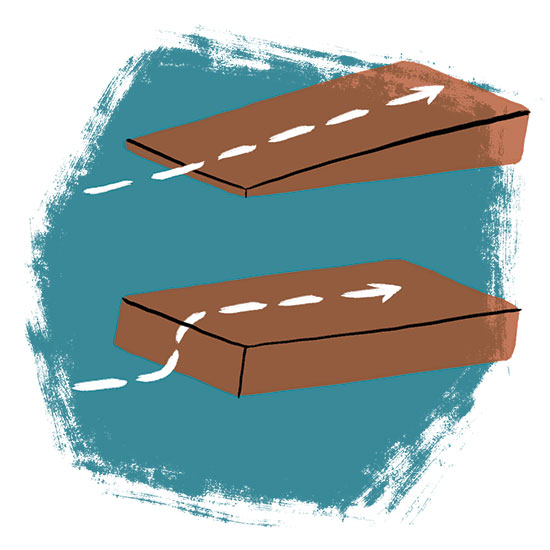
5. Create a Pinewood Derby car that is reasonably aerodynamic
An aerodynamic Pinewood Derby car’s design cuts down on drag caused by air. No need to get crazy here, but simply having a wedge-shaped Pinewood Derby car instead of the standard block out of the box will equal a 1.4-car advantage at the finish line.
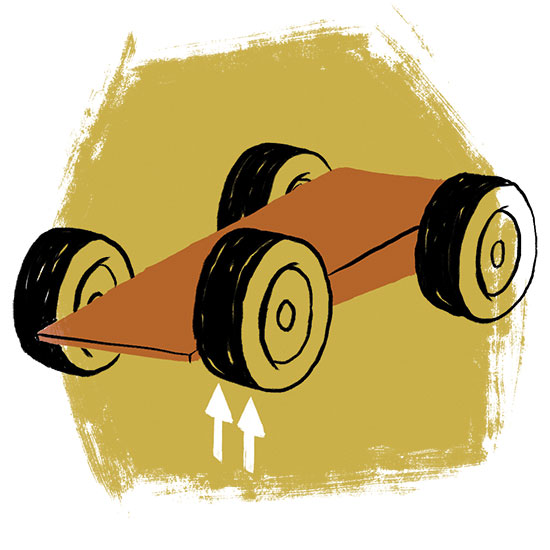
6. Ride on three wheels by raising one wheel off the track.
You will move faster if you have to get only three wheels rotating, giving you a 1.1-car advantage over an identical Pinewood Derby car riding on four wheels. (Check your pack’s Pinewood Derby rules to make sure this is allowed in your race.)
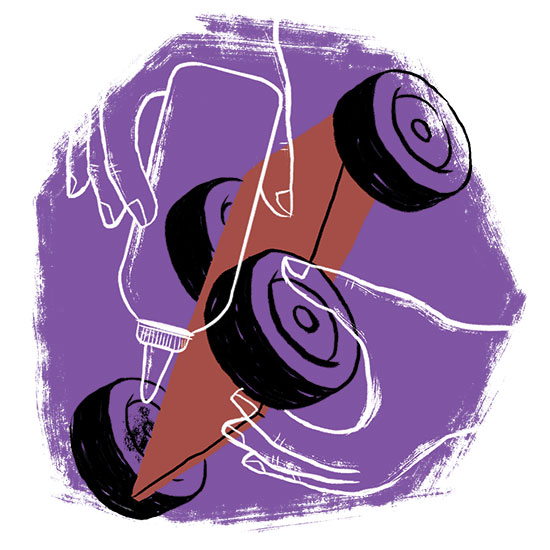
7. Use lots of graphite.
Graphite is the best way to lubricate your wheels and axles. There isn’t a big difference in types of graphite, so buy the cheap stuff and use as much as possible. Be sure to get plenty around each wheel and on the axle.
THE WINNING CONCLUSION!
It works! After my research, my son and I wanted to do one final test to prove that this is a good list. So we built a simple Pinewood Derby car using this list in 45 minutes, and we beat the fastest Pinewood Derby car in our local race by two car lengths. Turns out, science works!
Mark Rober worked as a mechanical engineer at NASA for nine years. During this time, he worked on Curiosity, a car-sized robot that left Earth in 2011 and landed on Mars in 2012. Mark is well-known for his YouTube videos on science, engineering and gadgets.
Loved the article. After three sons with lots of top 5 finishes but no first place, my youngest son just won our derby today. Our first step before we did any work in the garage was watching this video. You finally convinced me to try the three wheel design. We should have done this eight cars ago.
Awesome!
I am so gonna win pinewood derby… or at least a gold medal with this awesome video. Thanks, Mark!
Rail riding is probably illegal.
Wedge is probably the best easy design.
That video is going to help me and my brother win this!
I like trains.
Wow!
This advice is good, very similar to what my son and I did with his cars, and we had very fast cars. I taught my son to drill the rear axle holes at a slight angle (after filling the slots with putty). This way you don’t contort the axle after getting it all polished and shiny!
Rail riding is difficult if you are not allowed to raise a wheel, but you can still steer the car mildly into the rail with the front wheels. Keep the back wheels off the rail (this can be done by slightly indenting the front wheels. Also, rather than bend the nail, I like to drill a guide hole for the rear wheels that is just slightly angled (I fill in the slots with putty). Same effect, but less chance of messing up your nicely polished axles.
I think the video was very helpful
yeah.
Rail riding will get you kicked!
Use regular unbent axles